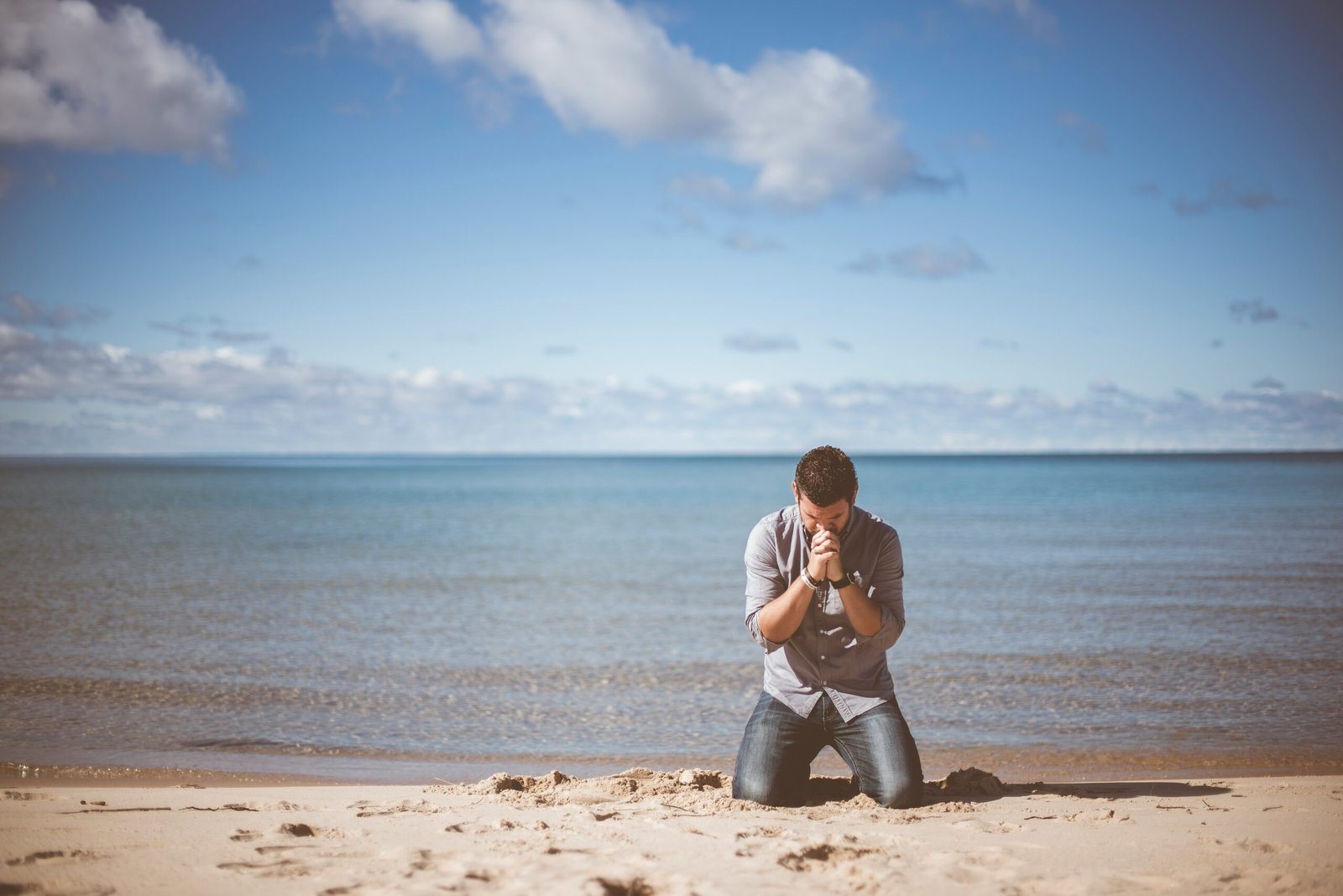The Mystique of the Ocean
The ocean, often dubbed the final frontier, envelops approximately 71% of our planet’s surface, presenting an awe-inspiring yet intimidating expanse that is both enchanting and formidable. Its vastness not only captivates the imagination but also harbors intricate ecosystems that encompass a staggering array of biodiversity. From the vibrant coral reefs teeming with life to the mysterious depths of the abyssal plains, the ocean is home to countless species, many of which remain undiscovered. This rich tapestry of marine life underlines the critical necessity for proper understanding and preservation of our seas.
Beyond its enchanting beauty, the ocean plays an influential role in regulating the Earth’s climate. It acts as a vast thermal reservoir, absorbing and redistributing solar energy throughout the planet. This process helps to stabilize weather patterns and maintain a balance in temperatures, making the sea vital for sustaining life on Earth. Moreover, the ocean is responsible for producing at least half of the oxygen we breathe, largely through phytoplankton, which thrive in its waters. Recognizing the ocean’s function in climate regulation highlights the importance of conserving marine environments to combat climate change and protect biodiversity.
The mysteries contained within the depths of the ocean have inspired countless explorations, innovations, and folklore. From shipwrecks that narrate human history to the unfathomable life forms that exhibit unique adaptations, the sea continues to be a source of fascination. For those venturing into its depths, understanding these complexities is pivotal. By appreciating the intricacies of oceanic ecosystems and the essential role they play in our world, one can develop essential skills and knowledge necessary for safe navigation and exploration. It is this understanding that equips individuals with the awareness crucial for survival in the captivating, yet unpredictable nature of the ocean.
Common Dangers of the Sea
The ocean, while a vast and beautiful expanse, harbors a range of dangers that can pose significant risks to those who venture into its depths. Understanding these threats is crucial for anyone planning to engage in maritime activities, whether for leisure or work. One of the most prevalent dangers is strong currents. According to the National Oceanic and Atmospheric Administration (NOAA), rip currents account for over 80% of lifeguard rescues at the beach each year. These powerful, narrow channels of water can swiftly pull even experienced swimmers away from shore, highlighting the need for caution and awareness of local conditions.
Additionally, waves can present a formidable hazard. The website of the World Meteorological Organization indicates that wave heights can exceed 20 feet during storms in some coastal areas. Such waves not only pose a risk of drowning but can also capsize boats and hinder escape routes. Anyone venturing out to sea must remain vigilant and recognize when conditions become hazardous.
Marine life is another area of concern. While most ocean creatures are non-threatening, some can pose serious danger. For instance, jellyfish stings can lead to severe reactions, while sharks, although rare, can attack. Instances of shark attacks tend to be sensationalized, yet it is vital to be informed about marine life in the vicinity of swimming or diving locations to minimize risk.
Finally, unpredictable weather changes can transform pleasant ocean outings into perilous situations. Sudden thunderstorms, high winds, or rapid temperature drops can catch individuals off-guard. Statistics from the U.S. Coast Guard show that about 60% of boating accidents are weather-related, emphasizing the importance of checking weather forecasts before embarking on a sea adventure. Preparation and knowledge are key to navigating the ocean’s dangers effectively.
Basic Survival Gear and Equipment
When venturing into the sea, having the appropriate survival gear can significantly enhance your chance of survival in challenging circumstances. Essential items such as life jackets, signaling devices, water filtration systems, and first aid kits should be at the forefront of any nautical safety checklist. Each of these components plays a critical role in ensuring safety, comfort, and the ability to manage emergencies effectively.
Life jackets, also known as personal flotation devices (PFDs), are crucial for keeping an individual buoyant in the water. When selecting a life jacket, it is important to consider factors such as size, weight capacity, and comfort. Opt for a device that fits snugly and is constructed from durable materials, thereby ensuring its reliability during turbulent sea conditions.
Signaling devices are vital tools for communication and visibility in emergency situations. Flares, whistles, and mirrors can be instrumental in attracting attention from nearby vessels or search and rescue teams. A combination of these devices is advisable, as each one serves a unique purpose and may be more effective in particular scenarios. Ensure that the devices are easily accessible and that you are well-versed in their usage.
Water filtration systems are essential, especially for longer sea trips where access to fresh water may be limited. Portable systems or purification tablets can help in turning seawater into safe drinking water, preventing dehydration. Choose a water filtration system based on your expected duration at sea and the size of your party to adequately meet your hydration needs.
Finally, having a well-stocked first aid kit onboard is an indispensable part of your survival gear. Ensure it includes basic medical supplies such as bandages, antiseptic wipes, and pain relief medication. It’s wise to customize the kit based on the number of people aboard and any specific medical needs. Proper knowledge of first aid will also optimize the effectiveness of all the gear you carry.
Essential Survival Skills
Surviving at sea demands not only a strong mental attitude but also a comprehensive set of practical skills. One of the most crucial abilities to master is swimming. Proficient swimming techniques can significantly enhance your chances of survival in case of an emergency. It is advisable to be well-versed in different strokes, as varying conditions may require adaptability in motion. Freestyle and backstroke are particularly useful for maintaining efficiency and conserving energy while swimming.
In addition to swimming skills, learning how to float or tread water is paramount. The ability to float allows an individual to rest without exhausting themselves, while treading water enables a person to remain afloat while searching for help or signaling for rescue. To practice floating, lay on your back with your arms and legs spread wide, using minimal effort to stay above water. Treading, on the other hand, involves moving your legs in a circular motion while keeping your arms at your sides or using them for support. Incorporating these techniques into your training can provide invaluable experience to rely on during an actual emergency.
Another essential survival skill is basic navigation. Understanding how to read the stars, use a compass, or read the ocean currents can help you to orient yourself and make informed decisions about direction while at sea. Begin by familiarizing yourself with the night sky, learning major constellations that can guide you. Acquiring a reliable compass and understanding its use can further aid in navigation. Additionally, studying ocean currents can provide insights into drift patterns which can be vital in plotting an escape route. Mastering these fundamental skills will empower you, increasing your confidence and preparedness before venturing into the seas.
Signaling for Help
When confronted with a maritime emergency, the ability to signal for help is crucial to your survival. The ocean can be vast and unforgiving, making it essential to effectively communicate your distress to potential rescuers. There are several methods of signaling that can significantly enhance your chances of being noticed and rescued.
One of the most recognized signaling methods is the use of flares. Flares are designed to emit a bright light and can be seen from great distances during both day and night. It is recommended to keep a few flares accessible in any emergency kit. When using flares, it is important to activate them in a safe manner, following the manufacturer’s guidelines. Additionally, understanding the best times to deploy flares, such as during twilight or at nighttime, can maximize visibility.
Another effective signaling tool is the use of reflective materials. A mirror can be an invaluable resource when attempting to signal for help. The goal is to direct sunlight towards passing ships or aircraft. This method requires a clear line of sight and patience, as it may take time for someone to notice the flash of light. Other reflective surfaces, such as polished aluminum or emergency space blankets, can also serve similar purposes.
In situations where traditional signaling tools are unavailable, improvisation may be necessary. You might consider creating large symbols or signals using rocks or any other materials available on the beach or shoreline. The universally recognized SOS signal, consisting of three short signals, followed by three long signals, and concluding with three short signals, can also be performed using sounds such as whistles or banging objects together. The key is to remain visible and audible to rescuers.
In conclusion, knowing how to effectively signal for help can mean the difference between life and death in maritime emergencies. Whether using flares, mirrors, or improvised methods, the goal remains the same: to communicate your location as clearly as possible to those who can assist you. Understanding these techniques and practicing them beforehand can enhance your readiness for unforeseen circumstances at sea.
Finding Fresh Water
Access to fresh water is critical for survival in a maritime environment. In conditions where freshwater sources are scarce, it is vital to implement effective strategies to obtain hydration. One of the primary methods for collecting fresh water at sea is through rainwater collection. Utilizing any available containers, such as buckets or tarps, can capture rainwater, which is typically safe to drink. Positioning these containers strategically can maximize the amount of water collected during rainfall, ensuring a continuous supply for hydration.
In addition to rainwater collection, knowing how to desalinate seawater can greatly enhance survival chances. Desalination involves the removal of salt and other impurities from seawater to produce potable water. Simple desalination techniques can include solar stills, which use the sun’s heat to evaporate seawater and condense it back into fresh water. Building a solar still requires minimal materials and can be an effective long-term solution in sunny conditions.
It is essential to recognize the importance of rationing water during survival situations at sea. The human body can endure several days without food, but the same cannot be said for water. To manage water intake wisely, individuals should establish a strict drinking schedule. This not only helps prevent dehydration but also ensures that the available water lasts for as long as possible. As a rule of thumb, rationing should aim for approximately half a liter of water per day if no other sources are available.
Ultimately, understanding how to locate and purify fresh water can greatly impact trajectory toward survival. Implementing techniques such as rainwater collection and desalination, combined with effective water rationing, are pivotal skills that can preserve life while stranded at sea. Preparation and resourcefulness in seeking hydration can make a significant difference in a person’s ability to endure such challenging conditions.
Food Sources at Sea
Surviving at sea necessitates not only securing fresh water but also finding sustenance through various food sources available in the marine environment. One of the primary means of gathering food is through fishing. Depending on the tools at hand, individuals can employ a variety of fishing techniques such as handlines, nets, or traps. The important point is to identify areas where fish are likely to be found, such as reefs, drop-offs, or structures in the water. These locations often harbor greater biodiversity and therefore increase the chances of a successful catch.
When considering the fishery’s sustainability, it is vital to stick to species that are known to be safe for consumption. Many individuals may be inclined to eat unfamiliar fish due to desperation. However, potential risks are associated with consuming unknown marine species, including toxicity and allergic reactions. As a rule of thumb, brightly colored fish or those with unusual patterns are best avoided, as these can be indicative of poisonous varieties. Instead, opt for more commonly recognized species, such as mackerel or sardines.
In addition to fish, the sea is home to other edible marine life such as mollusks and crustaceans. Clams, mussels, and crabs can provide essential protein and are often easier to catch. However, caution is necessary; proper preparation is crucial to ensure safety. Cooking these foods thoroughly minimizes the risk of pathogens or contaminants. Utilizing techniques such as boiling or steaming is preferable over raw consumption.
Ultimately, maintaining a balanced diet at sea is essential for sustaining energy and overall health. It is advisable to consume a variety of available food sources to meet nutritional needs. Making informed choices while foraging is key to successfully navigating the challenges of survival at sea.
Navigating the Sea Safely
Navigating across the unpredictable expanses of the sea is a skill that requires knowledge of various techniques and tools, ensuring the mariner can maintain their course effectively. One of the most fundamental methods of navigation relies on celestial bodies, namely the sun and stars. During the day, sailors can utilize the sun’s position to determine their direction; by observing the elevation of the sun at noon, one can establish their latitude. Similarly, at night, navigating by the stars, such as the North Star in the Northern Hemisphere, provides a reliable reference point. Understanding constellations and their movement across the night sky is beneficial in maintaining one’s course.
Additionally, ocean currents play a vital role in navigation. By familiarizing oneself with the patterns of tides and currents, seafarers can make informed decisions about their route. For instance, certain regions have known currents that can either aid or impede progress, so navigating against a strong current requires strategic planning. Awareness of these natural forces can enhance a sailor’s ability to traverse the seas effectively, making it essential to study local maritime charts.
In modern navigation, instruments such as compasses and GPS devices vastly improve accuracy. A compass allows for straightforward direction finding; however, it is crucial to account for magnetic declination, which can vary in different locations. Meanwhile, GPS devices utilize satellites to provide precise location information, enabling mariners to chart their course digitally. It is important to remember that while technology is highly reliable, mariners should retain traditional navigation skills as a backup. This ensures that in the event of device failure or disruption, sailors can revert to fundamental techniques, thereby increasing their chances of reaching their destination safely.
Mental Resilience in Sea Survival
Survival situations at sea present unique psychological challenges that can significantly impact an individual’s ability to endure. The vastness of the ocean, coupled with isolation and the uncertainty of rescue, can lead to feelings of anxiety, despair, and hopelessness. Understanding how to cultivate mental resilience is crucial in coping with such distressing environments. Developing strategies to maintain mental health during these trying times ensures that individuals can keep calm and focused on survival.
One effective strategy is to establish a routine. By creating a schedule that includes specific tasks such as rationing supplies, fishing, and maintaining a lookout, individuals can instill a sense of normalcy in the chaos. This consistency can mitigate feelings of anxiety and help maintain a level of control over the situation. Furthermore, active engagement in tasks provides a distraction from negative thoughts, which are common in prolonged survival scenarios.
Staying connected to positive memories and future goals is another powerful method for fostering mental resilience. Individuals are encouraged to visualize their loved ones or to recall happy moments. This positive visualization can serve as a motivating force, helping to counterbalance feelings of isolation and despair. It is essential to maintain hope, as a positive mindset can be the determining factor between survival and surrender.
Additionally, practicing mindfulness techniques such as deep breathing or meditation can greatly aid in managing stress levels. These techniques promote relaxation and can effectively lower anxiety, allowing individuals to think more clearly when faced with critical decisions. Maintaining mental resilience in sea survival situations, therefore, revolves around active coping strategies, fostering a sense of hope, and sustaining psychological well-being through mindfulness and positive reflection.













Leave feedback about this